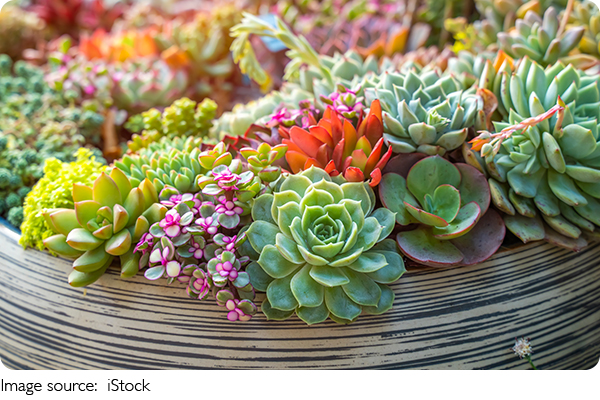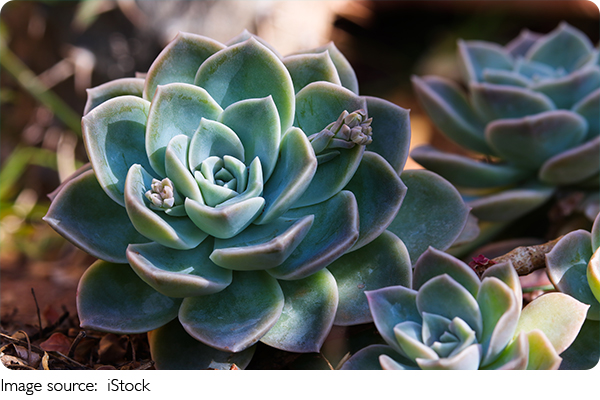Beauty of Echeveria

Hello plant lovers! If you've ever admired a small, beautifully symmetrical plant with succulent leaves, then you've likely encountered Echeveria.
Often referred to as the "green rose" because of its unique appearance, Echeveria is a charming succulent that can brighten any space with its rosette shape and variety of greenish hues.
In this article, we'll dive into the fascinating world of Echeveria, exploring its features, care tips, and why it's such a popular plant for succulent enthusiasts. Let's get started!
What is Echeveria?
Echeveria, often called "green rose" due to its compact, rosette-shaped structure, is a type of succulent plant that belongs to the Crassulaceae family. Its leaves are arranged in a rosette pattern, creating a spiral of fleshy, green or blue-green leaves. The plant's visual appeal is its resemblance to a small rose—compact, round, and gracefully layered.
This succulent comes in various species, each offering a unique blend of colors, shapes, and sizes. While the most common Echeveria displays lovely shades of green, some varieties boast blue or purple hues, giving each plant a slightly different character. Whether you are a beginner gardener or an experienced succulent collector, Echeveria is a perfect choice for any plant lover's collection.
Why is Echeveria so Special?
The charm of Echeveria lies in its distinct and symmetrical rosette shape. Its fleshy, rounded leaves have a smooth texture, often covered with a fine, waxy coating that helps retain moisture. This feature is not only practical—helping the plant thrive in dry environments—but also visually striking. The plant's appearance is neat and compact, making it ideal for small pots or as part of a larger succulent arrangement.
What's even more interesting is how Echeveria varies depending on the environment. In low light, its color may lean more towards a muted green, but in brighter light, the leaves can turn a soft blue or even a deep red at the tips, making it an adaptable and visually dynamic plant.
Native Habitat of Echeveria
Echeveria is native to the arid regions of Mexico and other parts of Central America. As a succulent, it's well-suited for dry, low-water environments, which is why it's commonly found in deserts or semi-deserts. The plant has adapted to these harsh climates by developing thick, fleshy leaves that store water and prevent dehydration during extended periods of drought.
This adaptation to dry conditions makes Echeveria a perfect plant for indoor spaces where water might not always be abundant, and it's also a great option for anyone looking for low-maintenance plants. Its ability to survive with minimal watering is part of what makes it such a popular choice for urban gardens and home décor.
How to Care for Echeveria
As easy as Echeveria is to fall in love with, it's also a low-maintenance plant that's simple to care for. With just a few basic tips, we can keep our Echeveria happy and thriving.
1. Light Requirements: Echeveria loves bright, indirect sunlight. While it can tolerate direct sunlight, too much exposure can cause the leaves to become scorched. A sunny windowsill or a spot with several hours of indirect light a day is perfect for this succulent. If you're growing it indoors, place it near a window where it can receive enough light.
2. Watering: One of the most important aspects of Echeveria care is proper watering. As a succulent, Echeveria doesn't need to be watered frequently. Overwatering is one of the few ways to harm this plant, as it can lead to root rot. We recommend watering only when the soil has dried out completely. Typically, watering once every 1-2 weeks during the warmer months should suffice.
3. Soil: Well-draining soil is crucial for Echeveria. To avoid waterlogged roots, use a cactus or succulent potting mix, or add sand or perlite to regular potting soil for better drainage. This helps prevent the plant from sitting in excess moisture, which could lead to fungal diseases.
4. Temperature and Humidity: Echeveria thrives in warm temperatures between 60-85°F (16-29°C). It doesn't fare well in freezing temperatures, so make sure to bring it indoors or protect it from frost during colder months. As a dry plant, it does well in low humidity, making it ideal for homes with dry air.
5. Fertilizing: Echeveria doesn't need a lot of fertilizer. During the growing season (spring and summer), feed your plant with a diluted, balanced liquid fertilizer once a month. Avoid fertilizing in the fall and winter when the plant's growth slows down.
Why Choose Echeveria for Your Home?
Echeveria is not just a practical plant; it's also a beautiful addition to any home or office. Its compact size makes it easy to place anywhere, whether on a desk, a shelf, or in a decorative pot. It's perfect for those who want to add some greenery without needing to tend to a high-maintenance garden.
Additionally, Echeveria is known for its air-purifying qualities, just like many other succulents. It helps improve the overall air quality in your home, making it a great choice for bedrooms, living rooms, or offices. The calming, soothing effect of having plants like Echeveria around cannot be overstated, as studies show that indoor plants reduce stress and increase productivity.
Fun Facts About Echeveria
Here are a few fun facts about Echeveria that we thought you'd enjoy:
1. Flowering: While not all varieties of Echeveria bloom, some will produce small, bell-shaped flowers in shades of pink or orange. These flowers typically appear during the warmer months and attract pollinators like bees and hummingbirds.
2. Propagation: Propagating Echeveria is relatively simple. You can propagate it from leaf cuttings or offsets. Just let the cut ends dry out for a few days before planting them in well-draining soil, and with patience, you'll have a new plant in no time!
3. Longevity: Echeveria is known for its ability to live for years with proper care. Some species can live up to a decade or more, making them a long-term addition to your indoor garden.

Conclusion: The Perfect Green Companion
To sum up, Echeveria is a fantastic choice for anyone looking to add a low-maintenance, visually appealing plant to their home. Whether you are a seasoned succulent enthusiast or a new plant parent, the Echeveria is sure to delight you with its rosette shape, vibrant color, and ease of care. Plus, it adds that lovely green rose aesthetic that brightens up any space.
Have you ever grown Echeveria in your home or garden? Or are you thinking about adding one to your collection? Feel free to share your thoughts in the comments—we'd love to hear from you!


